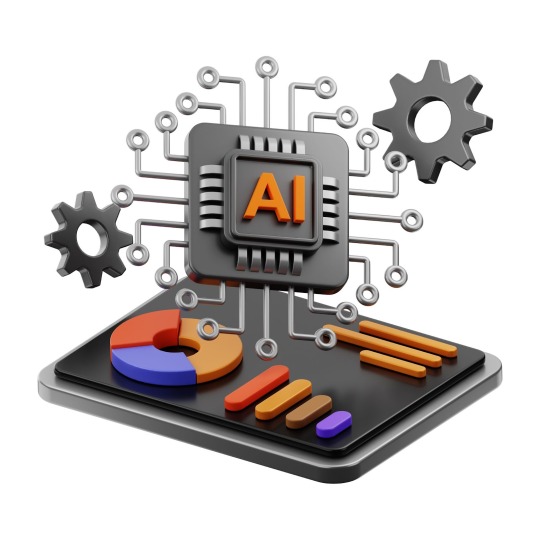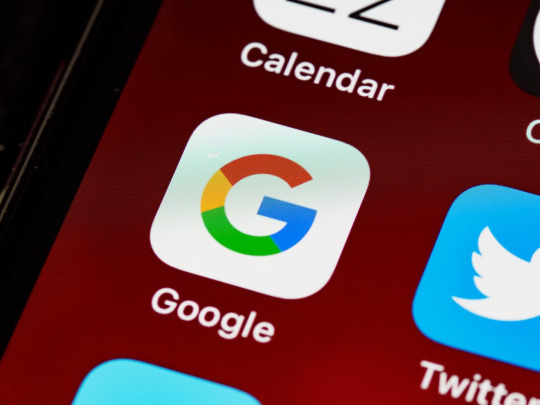Don't wanna be here? Send us removal request.
Text
What is Facebook Marketplace for Business?
Facebook Marketplace for Business is an online platform created by Facebook that allows businesses to list, sell, and promote their products or services within the Facebook social media marketing. It provides a convenient and accessible marketplace for both businesses and users to engage in buying and selling activities.

Key Features of Facebook Marketplace for Business
1. Business Listings
Businesses can create listings for their products or services, including images, descriptions, prices, and availability. These listings are then displayed to Facebook users who can browse and inquire about them.
2. Local and Global Reach
Facebook Marketplace offers businesses the opportunity to reach a wide audience, both locally and globally. Users can filter products based on location, enabling local businesses to target nearby customers.
3. Messenger Integration
Users can directly message businesses through Facebook Messenger to ask questions, negotiate prices, and finalize transactions. This facilitates communication and builds trust between businesses and potential customers.
4. Visibility to Facebook Users
Listings on Facebook Marketplace are visible to the vast user base of Facebook. Businesses can leverage this extensive reach to showcase their offerings to a diverse audience.
5. Integration with Business Pages
Listings on Facebook Marketplace can be linked to a business's Facebook Page, allowing businesses to manage their listings and interactions efficiently.
6. Promotional Opportunities
Businesses can choose to boost their listings by using Facebook's advertising tools. This helps in increasing the visibility of their products or services to a broader audience.
How Businesses Can Utilize Facebook Marketplace
a. Create Compelling Listings
Businesses should craft attractive listings with high-quality images and detailed descriptions to capture the attention of potential customers.
b. Engage with Customers
Engagement is key. Businesses should promptly respond to inquiries, provide helpful information, and maintain a positive and professional interaction with users.
c. Leverage Advertising
Consider using Facebook's advertising features to reach a larger audience and promote specific products or services. Targeting options allow businesses to reach the right demographic.
d. Maintain Transparency and Trust
Businesses should be transparent about their products, prices, and policies to build trust with customers. Honest and clear communication is vital for a successful transaction.
Benefits of Using Facebook Marketplace for Business
Increased Visibility: Businesses can tap into Facebook's massive user base to increase the visibility of their products or services.
Cost-Effective: Listing products on Facebook Marketplace is usually free, making it a cost-effective way for businesses to showcase their offerings.
Local Engagement: Local businesses can connect with nearby customers, encouraging local purchases and fostering a sense of community.
Easy Integration: Facebook Marketplace seamlessly integrates with a business's existing Facebook Page, simplifying the process of managing listings.
Direct Communication: Businesses can directly communicate with potential customers through Messenger, aiding in building relationships and facilitating transactions.
Conclusion
Facebook Marketplace for Business is a valuable platform for businesses looking to expand their reach and connect with a vast audience. By effectively utilizing this platform and its features, businesses can promote their products or services, engage with customers, and drive sales in an efficient and user-friendly manner within the Facebook ecosystem.
Key Features of Facebook Marketplace for Business
1. Business Listings
Businesses can create listings for their products or services, including images, descriptions, prices, and availability. These listings are then displayed to Facebook users who can browse and inquire about them.
2. Local and Global Reach
Facebook Marketplace offers businesses the opportunity to reach a wide audience, both locally and globally. Users can filter products based on location, enabling local businesses to target nearby customers.
3. Messenger Integration
Users can directly message businesses through Facebook Messenger to ask questions, negotiate prices, and finalize transactions. This facilitates communication and builds trust between businesses and potential customers.
4. Visibility to Facebook Users
Listings on Facebook Marketplace are visible to the vast user base of Facebook. Businesses can leverage this extensive reach to showcase their offerings to a diverse audience.
5. Integration with Business Pages
Listings on Facebook Marketplace can be linked to a business's Facebook Page, allowing businesses to manage their listings and interactions efficiently.
6. Promotional Opportunities
Businesses can choose to boost their listings by using Facebook's advertising tools. This helps in increasing the visibility of their products or services to a broader audience.
How Businesses Can Utilize Facebook Marketplace
a. Create Compelling Listings
Businesses should craft attractive listings with high-quality images and detailed descriptions to capture the attention of potential customers.
b. Engage with Customers
Engagement is key. Businesses should promptly respond to inquiries, provide helpful information, and maintain a positive and professional interaction with users.
c. Leverage Advertising
Consider using Facebook's advertising features to reach a larger audience and promote specific products or services. Targeting options allow businesses to reach the right demographic.
d. Maintain Transparency and Trust
Businesses should be transparent about their products, prices, and policies to build trust with customers. Honest and clear communication is vital for a successful transaction.
Benefits of Using Facebook Marketplace for Business
Increased Visibility: Businesses can tap into Facebook's massive user base to increase the visibility of their products or services.
Cost-Effective: Listing products on Facebook Marketplace is usually free, making it a cost-effective way for businesses to showcase their offerings.
Local Engagement: Local businesses can connect with nearby customers, encouraging local purchases and fostering a sense of community.
Easy Integration: Facebook Marketplace seamlessly integrates with a business's existing Facebook Page, simplifying the process of managing listings.
Direct Communication: Businesses can directly communicate with potential customers through Messenger, aiding in building relationships and facilitating transactions.
Conclusion
Facebook Marketplace for Business is a valuable platform for businesses looking to expand their reach and connect with a vast audience. By effectively utilizing this platform and its features, businesses can promote their products or services, engage with customers, and drive sales in an efficient and user-friendly manner within the Facebook ecosystem.
#facebook#digital marketing#marketing#business#new trends#blog#facebook market#social media#social media marketing
0 notes
Text

Building Digital Success: Unleashing the Power of Professional Web Development Services
In a digitally-driven world, professional web development services are the key to building a successful online presence. From designing visually captivating websites to ensuring seamless functionality and user experience, these services unleash the power of technology to help businesses thrive in the digital landscape.
#business it solutions#web development#digitalmarketing#webevistechnologiesllc#posting#development#new post#building digital success
5 notes
·
View notes
Text
Forget ChatGPT | Other Mind Blowing AI Tools

Image: Freepik
In the ever-evolving world of technology, artificial intelligence (AI) has become an integral part of our lives. From virtual assistants to chatbots, AI is transforming the way we interact with digital solutions. While ChatGPT is a well-known language model that has garnered a lot of attention, there are many other mind-blowing AI tools that digital agencies can explore to enhance their digital solutions.
Digital agencies are in the business of providing comprehensive digital solutions to their clients. This includes everything from website development to social media management. By leveraging AI, digital agencies can improve the efficiency and effectiveness of their services, ultimately providing better results for their clients.
Let's explore some other AI tools that digital agencies can use beyond ChatGPT.
IBM Watson
IBM Watson is an AI-powered system that can analyze unstructured data, such as text, images, and videos, to provide insights and recommendations. This tool can be used to automate many tasks, such as customer service and content creation, and can help digital agencies improve their efficiency.
For example, digital agencies can use IBM Watson to analyze social media posts and determine which ones are generating the most engagement. This can help them identify trends and create content that is more likely to resonate with their audience.
Google Cloud Vision

Image: Unsplash
Google Cloud Vision is an AI-powered image analysis tool that can detect objects, faces, and text in images and videos. This tool can be used to automate many tasks, such as tagging and categorizing images, and can help digital agencies improve their image and video analysis capabilities.
For example, digital agencies can use Google Cloud Vision to analyze images and videos on social media to determine which ones are generating the most engagement. This can help them identify trends and create content that is more likely to resonate with their audience.
Amazon Polly
Amazon Polly is an AI-powered text-to-speech service that can convert text into lifelike speech. This tool can be used to automate many tasks, such as creating voice overs for videos, and can help digital agencies improve their content creation capabilities.
For example, digital agencies can use Amazon Polly to create voice overs for explainer videos, which can help them better communicate complex ideas to their audience.
TensorFlow
TensorFlow, an open-source AI library created by Google, is an excellent resource for building and training machine learning models. With its automation capabilities, this tool can streamline several tasks, including data analysis and predictive modeling, making it an invaluable asset for web development agencies looking to enhance their data analysis capabilities.

Image: Freepik
For example, digital agencies can use TensorFlow to build predictive models that can help them identify which social media posts are likely to generate the most engagement. This can help them create more effective social media campaigns.
Hootsuite Insights
Hootsuite Insights is an AI-powered social media analytics tool that can help digital agencies monitor and analyze social media conversations. This tool can be used to automate many tasks, such as sentiment analysis and trend identification, and can help digital agencies improve their social media management capabilities.

Image: Hootsuite
For example, digital agencies can use Hootsuite Insights to monitor social media conversations about their clients' brands and products. This can help them identify areas where their clients can improve their marketing efforts and create more effective social media campaigns.
Conclusion
In conclusion, while ChatGPT is an impressive AI tool, digital agencies have many other options to explore. By leveraging AI tools like IBM Watson, Google Cloud Vision, Amazon Polly, TensorFlow, and Hootsuite Insights, digital agencies can improve their digital solutions and provide better results for their clients. As AI continues to evolve, we can expect to see even more innovative and exciting applications of this technology in the digital agency industry.
#marketing#digitalmarketing#blog#new post#chatgpt#content creation#content marketing#blogger#social media#news#google#lateststories
3 notes
·
View notes
Text
#marketing#artificial intelligence#google#new post#digitalmarketing#chatgpt#google bard#blog#trending#content creation#it solutions
0 notes
Text
Mobile Marketing Strategies: How to Maximize Engagement with Micro-Moments

Image: Freepik
Mobile devices have become an integral part of our daily lives. Businesses have quickly capitalized on this trend by adopting mobile marketing strategies to reach their target audiences. In today's fast-paced world, micro-moments are critical to capturing the attention of potential customers.
Micro-moments are those brief instances when people turn to their mobile devices to find information, make decisions, or take action.
Businesses must develop a comprehensive mobile marketing strategy to maximize engagement with micro-moments. Digital marketing strategy is a crucial aspect of this process, as it involves using various digital channels and tactics to reach and engage with customers.
One effective mobile marketing strategy is to use push notifications to alert customers about new products or services, sales, and other relevant information. Another is creating mobile-specific content such as videos, images, and infographics optimized for smaller screens.
Effective Digital Marketing Strategies To Maximize Engagement With Micro-Moments
Optimizing Your Website For Mobile Devices
One of the most crucial aspects of an effective mobile marketing strategy is ensuring your website is optimized for mobile devices. This includes ensuring that your website is responsive and automatically adjusts to fit the screen size of the device being used.
It would help if you also considered reducing the text on your mobile site and using clear, concise language to convey your message.
Creating Mobile-Friendly Content
Creating mobile-friendly content is another crucial aspect of a successful digital marketing strategy. This includes using clear, easy-to-read fonts, optimizing images and videos for mobile screens, and keeping your content short and sweet.
Mobile users have shorter attention spans, so grabbing their attention quickly and keeping them engaged is essential.
Leveraging Social Media And Mobile Apps
Social media and mobile apps can be powerful tools for engaging with customers in micro-moments. Platforms like Instagram, Snapchat, and TikTok are particularly effective for reaching younger audiences, while Facebook and Twitter can be used to connect with a broader range of age groups.
Additionally, mobile apps can offer exclusive promotions, rewards, and other incentives to customers who engage with your brand.
Utilizing Push Notifications
Push notifications can keep customers engaged and informed about new products or services, sales, and other relevant information.
However, it's vital to use push notifications sparingly and ensure they are personalized and relevant to the recipient. More statements can quickly become annoying and cause customers to opt out of receiving them altogether.
Using Location-Based Targeting
Location-based targeting is another powerful mobile marketing strategy that can be used to reach customers in micro-moments.
By targeting nearby customers, you can offer personalized deals, promotions, and other incentives tailored to their specific needs and preferences. This can help increase conversions and build customer loyalty over time.
Effective digital marketing strategies are essential for maximizing engagement with micro-moments in today's fast-paced digital landscape.
By optimizing your website for mobile devices, creating mobile-friendly content, leveraging social media and mobile apps, utilizing push notifications, and using location-based targeting, you can effectively engage with customers and drive conversions.
Remember, the key to success in digital marketing strategy is to keep your messaging personalized, relevant, and timely and keep the customer at the forefront of your marketing strategy.

Image: Freepik
The Importance Of Mobile-First Design In Digital Marketing
Mobile-First Design Principles
Designing websites and digital marketing campaigns with mobile users in mind is crucial in today's mobile-first world. Mobile-first design principles involve creating for the smallest screen size first and then expanding to larger screens.
This ensures that your website and marketing campaigns are optimized for mobile users and provide a seamless user experience across all devices.
Responsive Design
Responsive design is a crucial aspect of mobile-first design principles. This involves designing a website that automatically adjusts to fit the device's screen size.
This ensures your website is easy to navigate and use on any device, from smartphones to tablets to desktop computers.
Simplified Navigation
Mobile users have shorter attention spans and are often on the go, so it is essential to simplify your website's navigation to make it easy for users to find what they are looking for quickly.
This can be achieved using clear, concise language and organizing content into easily digestible chunks.
Mobile-Friendly Content
Creating mobile-friendly content is also essential for effective mobile-first design. This includes using short, attention-grabbing headlines, clear and concise language, and breaking up content into smaller chunks.
Additionally, images and videos optimized for mobile screens can capture users' attention and keep them engaged with your brand.
Speed Optimization
Mobile users need more patience for slow-loading websites, so speed optimization is crucial for effective mobile-first design.
This can be achieved by compressing images, minimizing code and scripts, and using a content delivery network (CDN) to deliver content faster to users.
Testing And Optimization
Testing and optimization are essential components of any mobile-first design strategy. A/B testing can help you determine which design elements and content are most effective at engaging users and driving conversions.
Tracking user behavior and using analytics to optimize your website and marketing campaigns can help ensure you deliver the best possible user experience to your customers. Mobile-first design is essential for effective digital marketing in today's mobile-first world.
By following mobile-first design principles, implementing responsive design, simplifying navigation, creating mobile-friendly content, optimizing speed, and testing and optimizing your website and marketing campaigns, you can effectively engage with mobile users and drive conversions.
Remember, the key to excel in digital marketing strategies is always to keep the user in mind and design with their needs and preferences.
Using Mobile Marketing To Build Brand Loyalty
Creating A Personalized Experience
Making the customer experience personalized is one of the best ways to increase brand loyalty. Push notifications and location-based targeting are just two examples of the many tools and methods for personalization available in mobile marketing.
You can provide customers with a more interesting and relevant experience that builds a stronger bond with your brand by sending them messages and offers that are specifically tailored to their preferences, behaviors, and location.
Offering Exclusive Promotions And Rewards
Another efficient strategy to increase brand loyalty is to provide your mobile customers with special promotions and rewards. Special discounts, early access to sales, and other incentives that are only available to mobile users can be offered by mobile apps and messaging platforms.
This can help build a sense of exclusivity and make customers feel valued and appreciated.

Image: Freepik
Providing Exceptional Customer Service
Building brand loyalty requires providing exceptional customer service. By providing chatbots and messaging platforms that make it quick and simple for customers to contact your brand, mobile marketing can improve customer service.
Customers can easily find the information they require by using mobile apps and websites that can be designed to offer useful resources and responses to frequently asked questions.
Leveraging User-Generated Content
User-generated content has the potential to be a potent tool for increasing brand loyalty. You can foster a sense of community and encourage engagement with your brand by encouraging customers to share their interactions with it on social media and other platforms.
Marketing can facilitate creating and sharing user-generated content by offering incentives, such as contests or giveaways, for customers who share their experiences.
Using Gamification Techniques
Rewards programs and loyalty points are two examples of gamification techniques that can increase brand loyalty by motivating regular customer interaction with your business.
Mobile apps and messaging services can monitor customer activity and provide incentives for carrying out particular tasks, like making a purchase or sharing a blog post on social media.
You can strengthen your relationship with your customers and boost brand loyalty by making brand engagement enjoyable and rewarding.
By offering a personalized experience, providing special promotions and rewards, offering first-rate customer service, utilizing user-generated content, and utilizing gamification techniques, mobile marketing can be a potent tool for fostering brand loyalty.
Utilizing these techniques to interact with your clients and strengthen your brand's relationship with them can boost client loyalty, encourage repeat business, and, ultimately, boost sales. Always put your customers first and base your mobile marketing strategy on their requirements and preferences if you want to be successful.
The Future Of Mobile Marketing
Augmented Reality (AR) And Virtual Reality (VR)
Augmented reality (AR) and virtual reality (VR) in mobile marketing are becoming increasingly popular. Brands can interact with customers in fresh and exciting ways by using AR and VR technologies, which provide distinctive and immersive experiences.
While VR can be used to create immersive brand experiences, AR can be used to provide virtual product demonstrations. We anticipate that more brands will incorporate AR and VR into their mobile marketing strategies as these technologies advance and become more widely available.
Artificial Intelligence (AI)
Another technology that will likely have a big impact on the future of mobile marketing is artificial intelligence (AI).
AI can be used to personalize marketing messages and offers based on individual customer preferences and behaviors and to automate and optimize marketing campaigns. By using AI to analyze data and make informed decisions about marketing strategies, brands can improve their targeting and ROI.
Voice Search Optimization
With the increasing popularity of smart speakers and voice assistants, voice search optimization is becoming a critical component of mobile marketing.
Brands can optimize their websites and marketing campaigns for voice search by using natural language, answering frequently asked questions, and providing concise and relevant information.
By optimizing for voice search, brands can improve their visibility and reach new audiences searching for information on the go.
Chatbots And Conversational Marketing
Chatbots and conversational marketing are other trends expected to continue to grow in the coming years. Using chatbots to engage with customers in real-time and provide personalized recommendations and offers; brands can improve the customer experience and drive sales.
Additionally, conversational marketing can create more meaningful and engaging customer interactions, building stronger relationships and fostering brand loyalty.
In a nutshell, the future of mobile marketing is bright, with technologies such as AR and VR, AI, voice search optimization, chatbots, and conversational marketing offering new and exciting opportunities for brands to engage with customers.
By staying up-to-date with the latest trends and technologies and incorporating them into their mobile marketing strategies, brands can stay ahead of the curve and continue to drive growth and success.

Image: Freepik
Conclusion
Modern marketing strategies must include mobile marketing because it provides a variety of tools and methods for connecting with customers while they are on the go.
From optimizing websites and campaigns for mobile devices to utilizing mobile apps and platforms to deliver targeted messages and offers, mobile marketing can help brands reach new audiences, increase brand awareness, and boost sales.
If brands want to increase customer engagement, they must offer a tailored experience that takes into account theThis can be accomplished with the aid of data-driven insights, targeted messaging, and the application of geolocation and push notification technologies. and all help achieve this. and push notifications.
Additionally, exceptional customer experiences, exclusive promotions and rewards, the use of user-generated content, and gamification strategies are all necessary for fostering brand loyalty through mobile marketing.
Utilizing these techniques to interact with customers and strengthen brand loyalty can boost repeat business, boost customer loyalty, and ultimately boost revenue.
Innovative technologies like augmented reality, artificial intelligence, voice search optimization, chatbots, and conversational marketing give brands exciting new opportunities to engage with customers in the future.
Brands can remain competitive, spur growth, and achieve success by staying on top of the trends and incorporating these technologies into their mobile marketing strategies.
Modern marketing strategies must include mobile marketing because it provides a variety of tools and methods for connecting with customers while they are on the go.
Brands can maximize engagement with micro-moments, foster brand loyalty, and promote growth and success in the constantly changing field of mobile marketing by utilizing data-driven insights, targeted messaging, and cutting-edge technologies.
1 note
·
View note